Diwali Maths Worksheets
Rangoli Count and Colour 2D Shapes
Year groups: 1
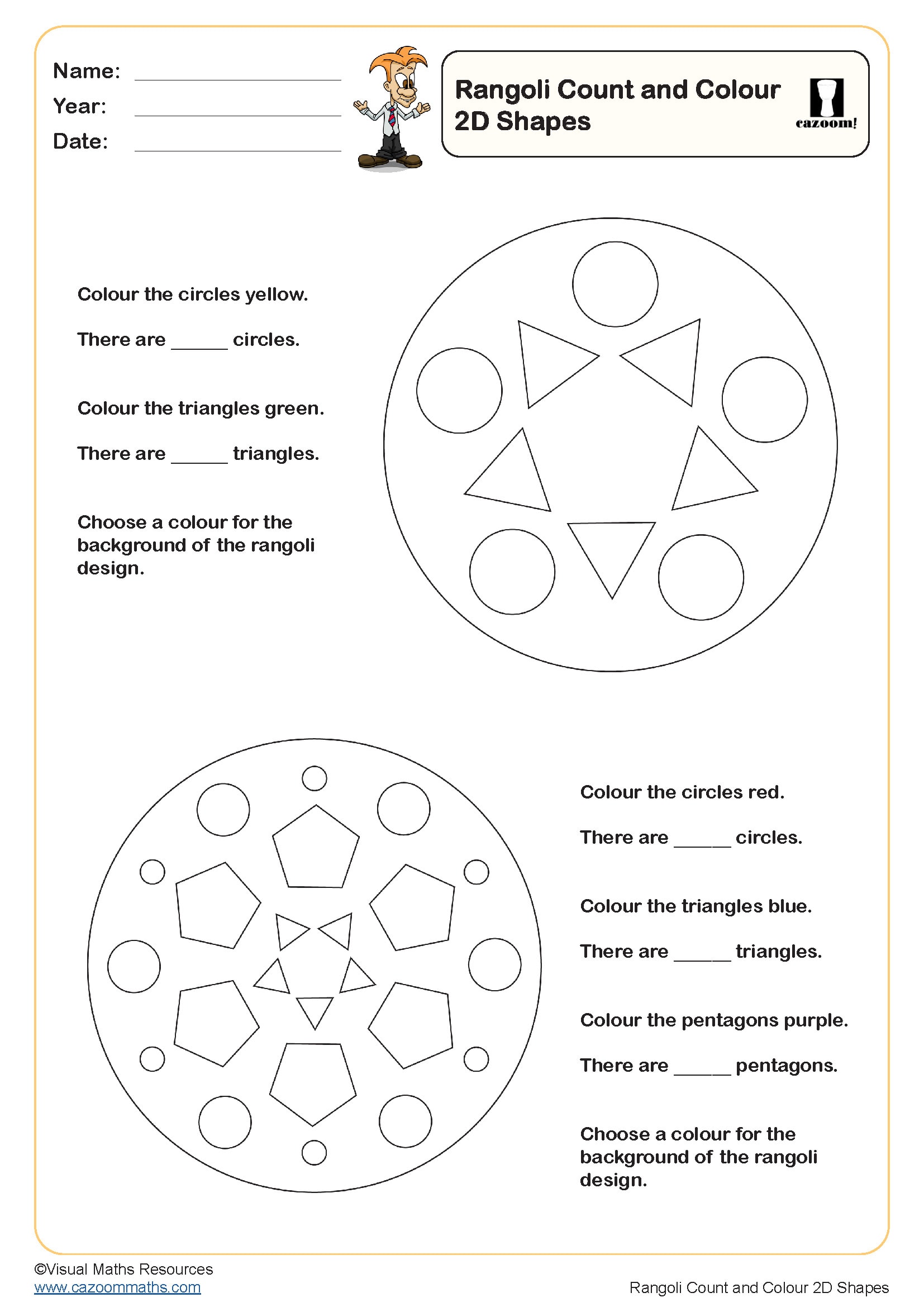
Rangoli Colour by Number - Odd and Even Numbers
Year groups: 2

Rangoli Colour by Number - 2, 3 and 4 times tables
Year groups: 3

Rangoli Colour by Number - 3, 6, 7, 8, 9 and 11 times tables
Year groups: 4

Rangoli Colour by Number - Decimal Operations
Year groups: 5, 6
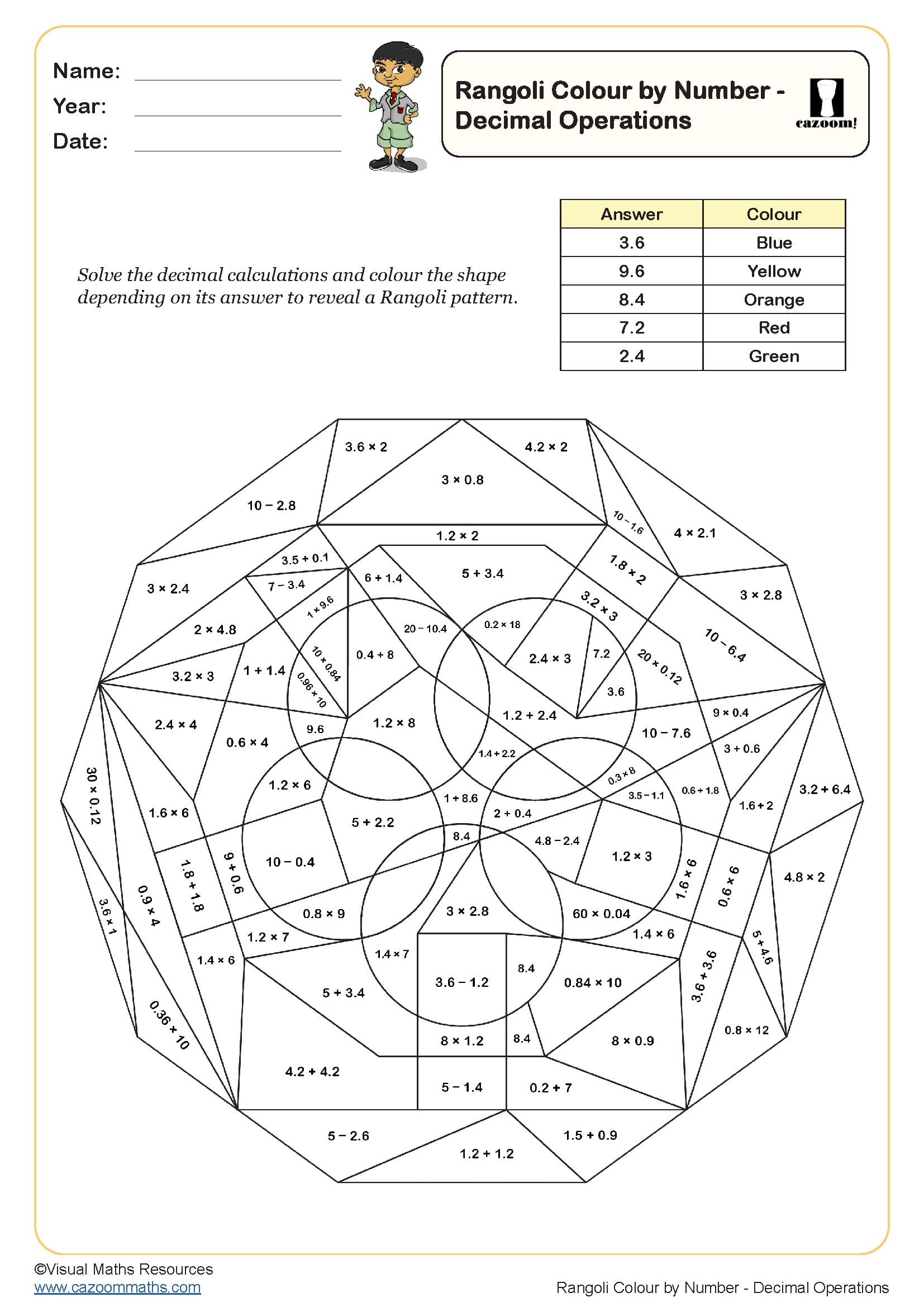
Diwali Rangoli Patterns
Year groups: 6
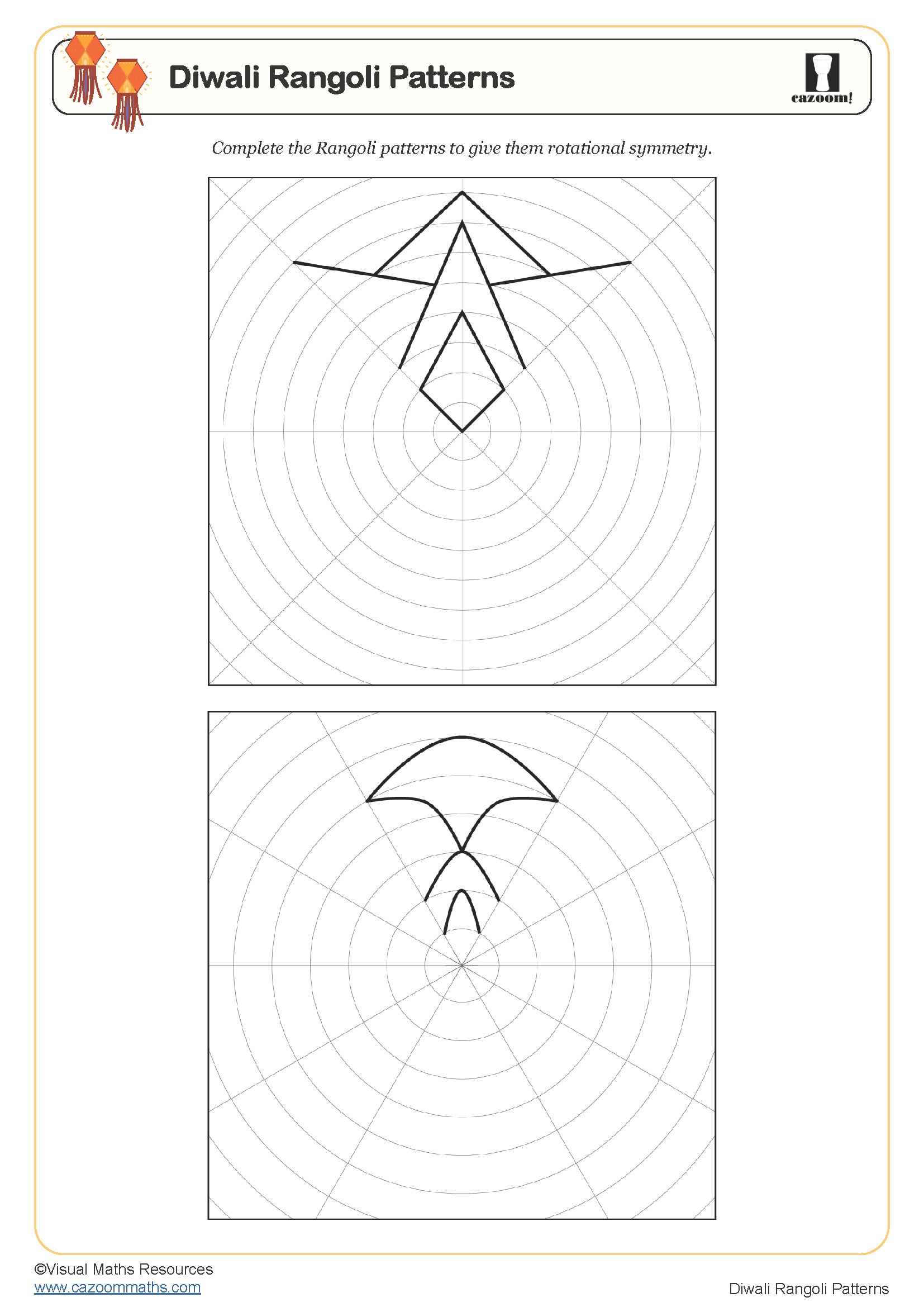
Make a Diwali Lantern
Year groups: 6
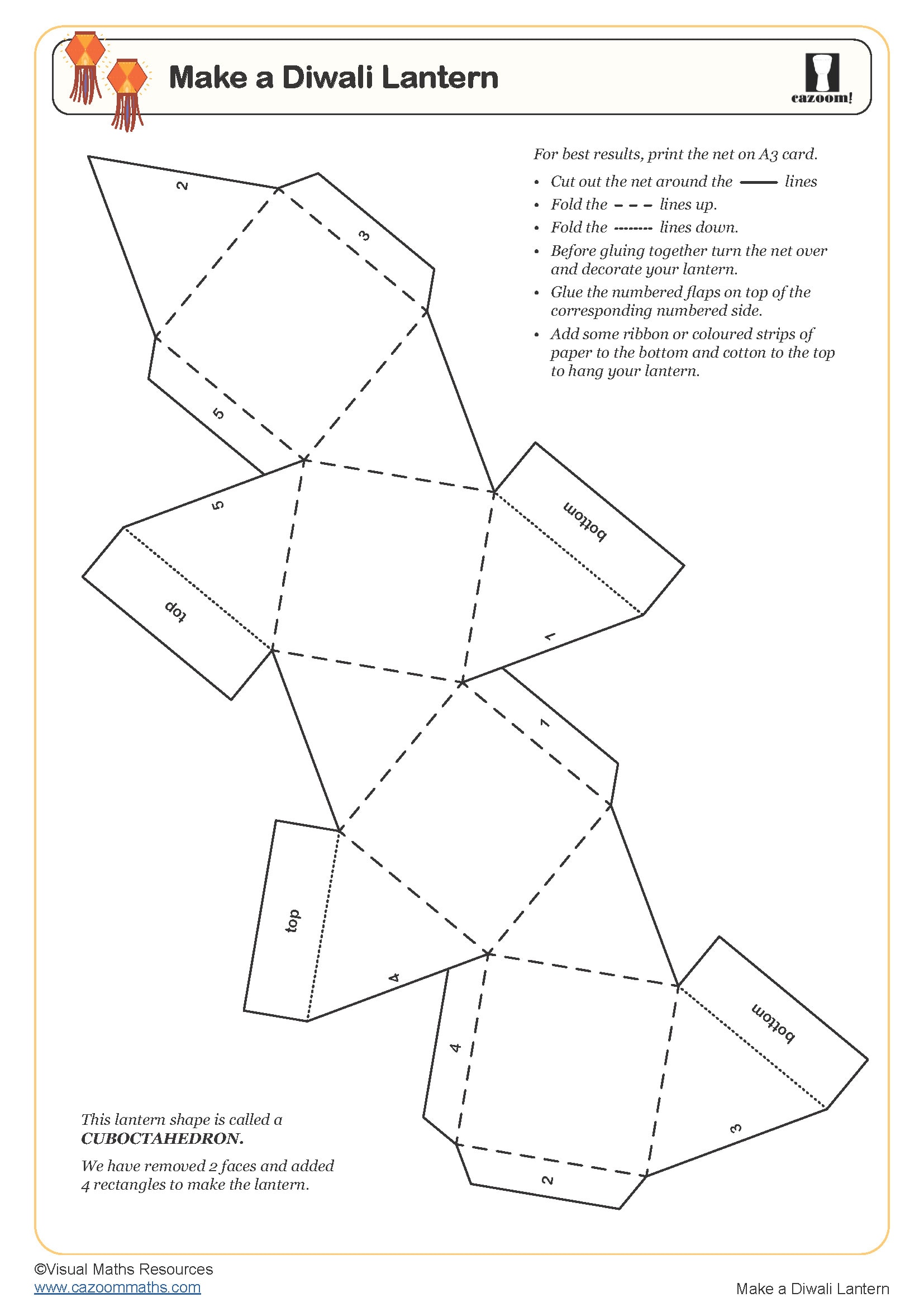
Diwali Food Ingredient Proportion Problems
Year groups: 7, 8, 9
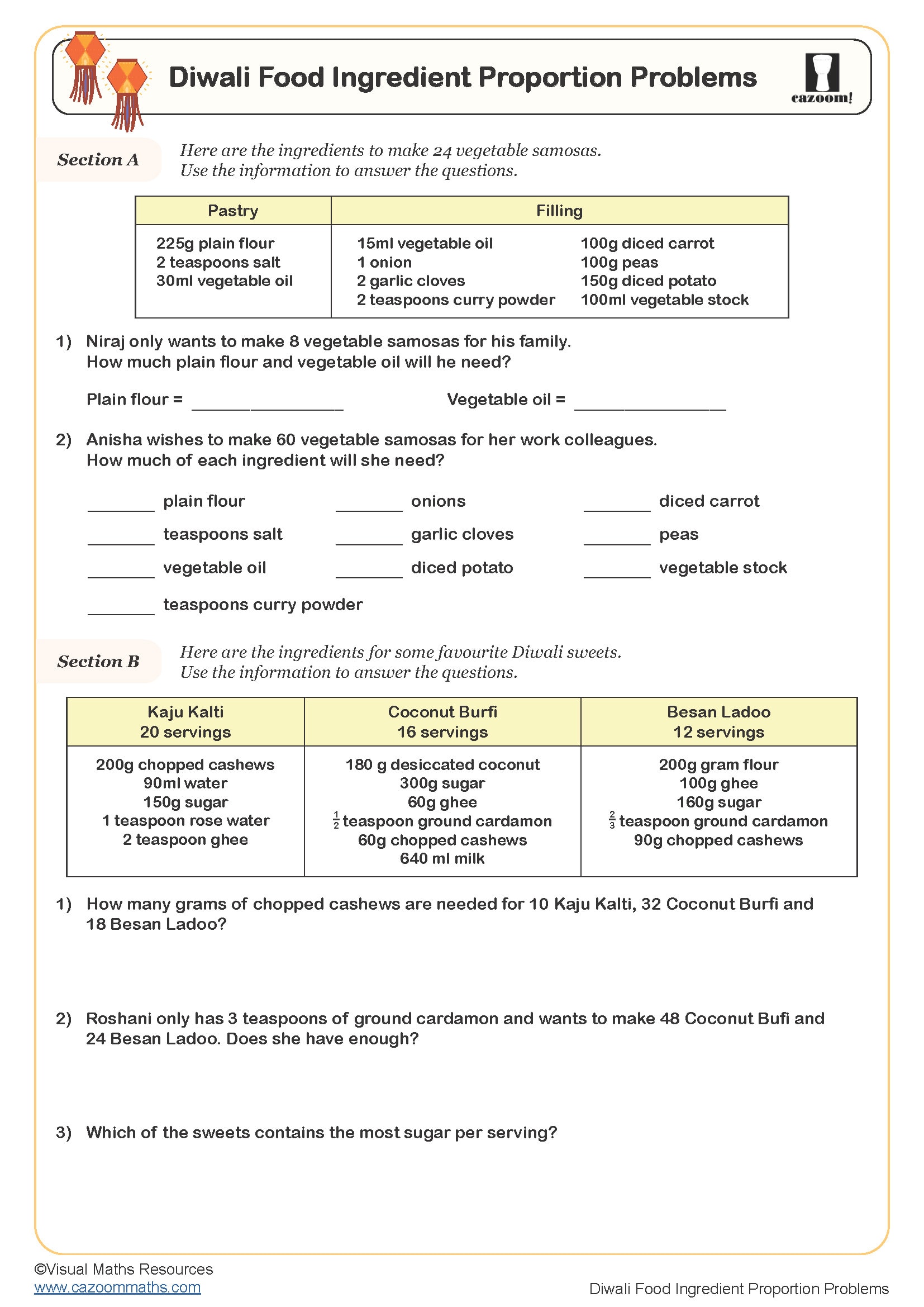
Diwali Rangoli Patterns
Year groups: 7, 8

Make a Diwali Lantern
Year groups: 7, 8

diwali MATHS!
Diwali, also known as the “Festival of Lights”, is celebrated with radiant lights and joy, and is well-known for its colourful decorations and traditional practices. Surprisingly, mathematics plays a subtle role in the festival. Crafting complex rangoli patterns involves geometry, and arranging diyas with precision highlights spatial awareness.
For those seeking to blend education with the festivities, Cazoom Maths Worksheets offers a range of Diwali-themed maths resources. These resources provide an engaging way for children to enjoy learning while celebrating the spirit of Diwali, subtly weaving mathematics into the festive atmosphere.
DIWALI AND MATHS?
While not directly tied to the cultural and religious essence of Diwali, maths does have some relevance to the celebration. For instance, the creation of complex rangoli designs involves geometry, symmetry, and spatial awareness, allowing the use of mathematical concepts such as angles and patterns. Likewise, during Diwali preparations, shopping for gifts and sweets, arithmetic plays a role in calculating costs, discounts, and quantities. These mathematical aspects, though subtle, contribute to the festival’s unique and diverse celebration.
Diwali in Numbers!
Diwali falls on the 15th day of the Hindu calendar month of Kartik, a significant date in the festival’s tradition. This 5-day celebration carries deep meanings, with each day having a unique importance. This amazing festival brings together over a billion people to celebrate light and hope. Festivities are not just happening in India; Diwali resonates with Indian communities and Hindus in countries like the United Kingdom, the United States, Canada, Australia, and numerous others worldwide.